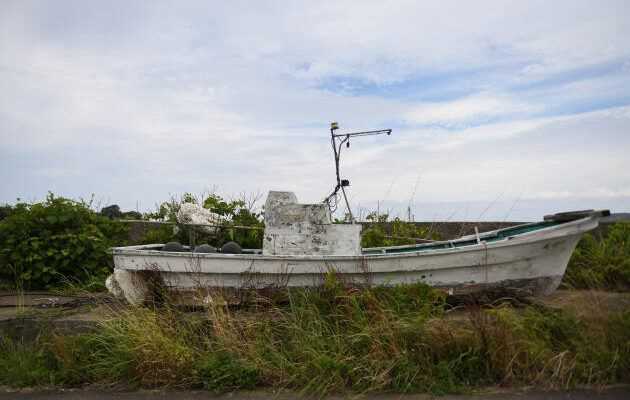Reportage“The other Japan” (6/6). Typhoons causing landslides, disappearance of fish, drought and record rainfall … Long spared by disasters, the island of Iki is now suffering the effects of climate change.
Kentaro Suenaga is worried. The owner of the restaurant Ajiyoshi, inventor forty years ago of the “unidon” – a bowl of rice covered with sea urchins and seasoned with a traditional broth, wasabi and soy sauce, which you need ” mix well ” -, fears of not being able to serve very long what has become a major culinary asset of Iki. Because, on this island of 139 square kilometers, two hours by ferry west of Kyushu, in southwestern Japan, “There are less and less sea urchins”. “The algae they eat are disappearing due to the warming of the water and changes in the current”, explains the talkative restaurateur in his establishment with its wooden frontage adorned with model ships.
Sometimes also attributed to the excesses of fishermen from neighboring China and followers of the so-called “deep water” technique which scrapes the seabed, the threat weighing on the sea urchin Iki, but also on its abalone and its abalones. sazae – a kind of sea snail – is added to a multitude of signals testifying to the growing effects of climate change on the region. This development convinced the mayor, Hirokazu Shirakawa, to declare a state of climate emergency for the entire island on September 25, 2019, a first in Japan. “The impact of climate change is manifesting itself more and more clearly and represents a threat to the lives of citizens”, explains the city councilor.
The island suffered landslides in 2020, following powerful typhoons. The previous years had been marked by record rainfall, alternating with periods of intense drought. And the average temperature fell from 15.1 ° C to 15.8 ° C between 1978 and 2018. A multifaceted threat to all the activities of this small territory of 26,000 souls, which hosted, before the Covid pandemic. 19, 230,000 tourists per year coming to enjoy its coastline alternating between sandy beaches and rocky cliffs, and to photograph its famous “monkey rock”, sculpted by the wind and the spray, on its western coast.
“The insects disappear”
The port of Katsumoto, in the north of the island, has only a hundred fishermen left (500 in the 1970s). “The very profitable tuna fishery is over. There are no more, just like the amberjack, which is now caught further north, off Hokkaido. In Iki, today we catch fish that we did not see in the past, such as the banner grouper, which was fished further south ”, explains Toru Okubo, one of the managers of the fish market.
You have 67.1% of this article left to read. The rest is for subscribers only.
